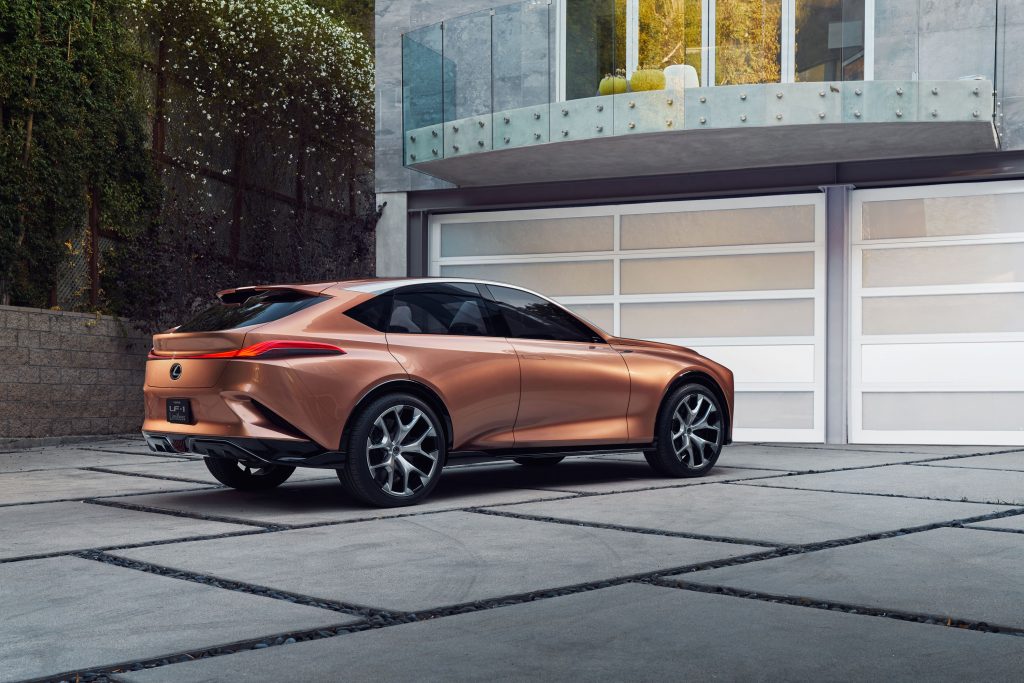After numerous rumors, reported delays, several rendered photos, and plenty of head scratching, production plans for the 2018 LF-1 Limitless Concept are beginning to come into focus. Since it debuted at the 2018 North American International Auto Show, the LF-1 Limitless Concept has become something of a unicorn and risen to fame as Lexus’ most desirable concept without a production follow up. Many Lexus enthusiasts and readers have asked over the years: Where IS the production LF-1 Limitless?
At the recent Lexus Product Showcase Event in Plano, TX, we were able to get some answers about the future of the LF-1 Limitless and it’s all good news. When asking a Lexus executive about the future of the concept – and mentioning that its the #1 question we receive from Lexus enthusiasts – the response we received was: “All of our concepts mean something for production, so you’ll see what came of the LF-1 in the next 14 months.”
Note: Lexus Enthusiast Podcast Episode 16: Inside the Lexus and Toyota Product Showcase Event covers the LF-Z Electrified, LF-1 Limitless, and much more on the future of Lexus.
“14 months” is interesting because it’s also the same timeframe in which Lexus has promised a production version of the LF-Z Electrified concept. Could it be that the LF-1 Limitless and LF-Z Electrified will be merged into one production vehicle? It certainly seems so. Comparing specs of the two concepts, they are within a few mm — or inches — of each other in most dimensions: wheelbase, length, width, and more.


As we’ve discussed many times on the Lexus Enthusiast Podcast, it seems possible that Lexus’ growing SUV and CUV portfolio didn’t leave room for a direct production translation of the LF-1 Limitless concept. While many loved the design and rear-wheel drive layout, it seems the most logical way to transition the concept into a production vehicle is something closer to the execution of the battery electric LF-Z Electrified Concept.


Lexus’ CUV and SUV portfolio is about to undergo a TNGA transition much like the Toyota lineup has been experiencing since 2019, but the good news is that as seen with the second-generation NX, Lexus products will be coming with a host of upgrades over their Toyota cousins including new full-time all-wheel drive systems, powerful hybrids, torquey turbocharged powertrains, and more. These advancements likely narrowed the gap between a theoretical next-generation RX and a rear-wheel drive crossover like the LF-1 Limitless causing Lexus to rethink performance and capabilities across their lineup. We also know about the “RX 500h” trademark, hinting at an uplevel RX in addition to the larger, likely three-row TX 350 and TX 500h crossovers. Let us also not forget about the new LX that’s just around the corner, and a rumored third-generation GX SUV. With so many all-new or completely redesigned SUVs and CUVs coming soon, it seems that there was no — or very little — space left for the LF-1 Limitless concept to join the lineup as a direct translation to production.


Thinking about the future of the LF-Z Electrified concept, with midsize proportions (like “RX” denoting a midsize crossover and “RC” being a midsize coupe) and the “RZ 450e” name trademarked across the globe, our assumption is that the RZ 450e will join the Lexus lineup in August of 2022 as a 2023 model year embodying both the LF-1 Limitless and LF-Z Electrified in one vehicle. Based on Lexus’ statements about the LF-1 Limitless and LF-Z Electrified concepts coming to production in the next 14 months, it’s hard to envision any other scenario.


For some who were excited about rumors of the LF-1 Limitless coming to production with a 4.0L twin-turbo V8, or who really want a rear-wheel drive premium Lexus crossover flagship with a conventional gasoline or hybrid engine, this might not be the best news. However, after seeing the LF-Z Electrified in person, considering the market shift to battery electric vehicles, experiencing how Lexus has leveled-up the new NX and thinking about the evolution of Lexus’ lineup, this feels like the right decision at the right time. The LF-1 Limitless and LF-Z Electrified have been two of Lexus’ most well-received and popular concepts, so it’s certainly exciting to think about exactly what the RZ means for the future of Lexus, and just how great it might be.

